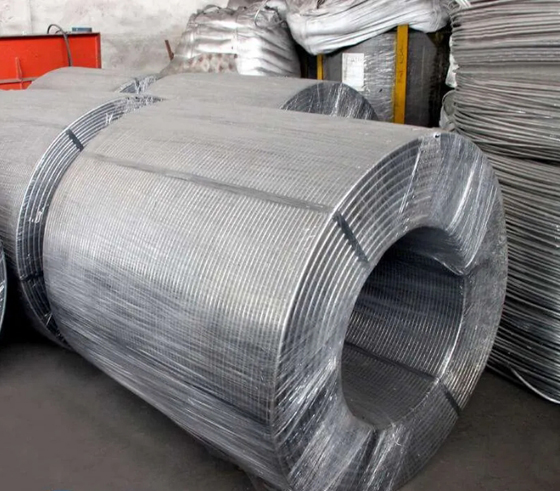
Creep is a stress-dependent phenomenon which combines self diffusion and slippage at grain boundaries. Creep-resistant steels are characterized by having low creep rates.
Tensile test data were used to extract the yield strength, sy, as a function of creep time, t. 0Cr samples showed a continuous decay of sy over the test duration.
The Stress-Strain Curve is an important tool that allows engineers to determine the maximum load that a material can handle without failing. It is made by conducting a tensile test using a testing machine that will capture the data as the specimen deforms.
The initial region of the curve, represented by point A or OA, is the elastic region and obeys Hooke’s Law. After point A, the material enters the ductile region and will begin to experience permanent deformation.
The stress-strain curve is a graphic representation of the relationship between the applied load and the resulting strain on the sample. The load is a measure of the stress in newtons per square centimeter (Pa), or pounds per square inch (psi). The strain is a measurement of the change in length of the sample. To draw a stress-strain curve, first mark the elongation of the sample and its original cross-section area. Then plot the stress and strain data pairs on the graph.
In high-temperature applications, materials need to be capable of deforming at temperatures higher than their melting point. This is why a material’s creep resistance depends on its microstructure, namely its grain size and the way in which its particles are distributed within it.
Grain size increases the resistance to mechanical degradation by blocking dislocation motion, which leads to a slower rate of plastic deformation. This is because a material’s grain boundary density decreases as its grain size increases, and this reduces the number of dislocation sites that can move along the boundaries.
Precipitation hardening strengthens the creep resistance of materials by adding second phases that block dislocation movement. This is accomplished by precipitating a secondary phase out of the primary crystal lattice. The shape of the resulting coherent precipitates is determined by its misfit strain, interfacial energy, and size32. The morphology of these coherent precipitates has been investigated using integrated experimental (scanning transmission electron microscopy/transmission electron micrographs, in-situ neutron diffraction, and atom-probe tomography) and theoretical (crystal-plasticity finite-element modeling) techniques.
In creep, atomic slippage along grain boundaries is a major cause of deformation. This can lead to the formation of cracks several grains long, causing failure in the part. Grain boundary sliding can be prevented by increasing the diffusivity of the material or by adding particles that block dislocation motion, like oxide or carbide.
In our recent experiments with 0Cr and 13Cr samples, we found that the addition of Cr enhances the remnant tensile strength, sy, despite severe creep damage, as shown in the sy-t curve (Figure 2). This is a significant finding, since previous creep history is conventionally known to weaken the tensile properties of welded materials.
This improvement is primarily attributed to solute diffusion, which accelerates the coarsening of cementite during the creep process. This is due to the fact that the Cr element, with its atomic size misfit, is preferentially segregated into cementite and a solute atmosphere formed around moving dislocations. This results in the solutes promoting the growth of a new precipitate around the dislocation core.

The mechanical creep behavior of materials is influenced by both temperature and the microstructure. The diffusivity of atoms within a crystal lattice increases with the material’s melting point, which makes the materials more susceptible to deformation. Creep occurs when the stress is below the yield strength of the material, causing the atoms to move into vacant sites within the lattice and form new phases.
This enables the material to deform more easily, but it also results in higher degradation of remnant tensile strength. TEM observations of the 1Cr samples reveal that the morphologies of cementite particles are different from those of the 0Cr samples, as shown in Figure 5. Elongated rods line up along ferrite lath boundaries in the 0Cr sample crept for 96 h, but they are distributed uniformly throughout the microstructure in the 1Cr sample crept for 96 ks. This results in a sluggish coarsening of cementite and a continuous precipitation-strengthening effect.

Write a Message